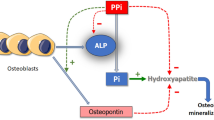Summary
In 50 females with normal pregnancies serum concentrations of the pregnancy-specific protein SP-1 were assayed by single radial immunodiffusion (Mancini) from the 20th week of gestation onwards. The total of 283 single tests revealed that serum SP-1 concentrations steadily increased after the 20th week of gestation to reach a plateau in the 37th week.
Single radial immunodiffusion failed to identify any SP-1 in umbilical cord blood of newborns.
Serum SP-1 concentrations were also assayed in high-risk pregnancies: In cases with diabetes and Rh-incompatibility serum levels were within the normal range. In EPH gestoses with a favorable prognosis serum levels were usually below the means but still within the normal range. In EPH gestoses with a poor prognosis concentrations were found to be considerably lower and mostly fell below the 2S range.
Zusammenfassung
Die Serumkonzentration des schwangerschaftsspezifischen Proteins SP-1 wurde bei 50 Frauen mit normaler Schwangerschaft mittels der einfachen radialen Immundiffusionsmethode nach Mancini ab der 20. Woche geprüft. Aus insgesamt 283 Untersuchungen ergibt sich: die Konzentration von SP-1 steigt von der 20. Woche der Gestation kontinuierlich an, um ab der 37. Woche eine Plateaubildung zu erfahren.
Durch die genannte Methode konnte im Serum des Nabelschnurblutes von Neugeborenen in keinem Fall SP-1 nachgewiesen werden.
Die Serumkonzentration von SP-1 wurde bei Fällen mit Risikoschwangerschaften geprüft:
Bei durch Diabetes und Rhesusinkompatibilität komplizierten Graviditäten lagen die Werte im Normbereich; Fälle von EPH-Gestose mit guter Prognose lagen im Normbereich, meist unterhalb der Mittelwerte; Fälle von EPH-Gestose mit schlechter Prognose zeigten massiv gesenkte Werte, zum Großteil unterhalb der doppelten Standardabweichung.
Similar content being viewed by others
Literature
Bohn, H.: Nachweis und Charakterisierung von Schwangerschaftsproteinen in der menschlichen Placenta sowie ihre quantitative immunologische Bestimmung im Serum schwangerer Frauen. Arch Gynäk.210, 440 (1971)
Bohn, H.: Isolierung und Charakterisierung des schwangerschaftsspezifischenβ 1-Glykoproteins. Blut24, 292 (1972)
Bohn, H., Kranz, Th.: Untersuchungen über die Bindung von Steroidhormonen an menschliche Schwangerschaftsproteine. Arch. Gynäk.215, 63 (1973)
Bohn, H.: Untersuchungen über das schwangerschaftsspezifischeβ 1-Glykoprotein (SP-1). Arch. Gynäk. (im Druck)
Mancini, G., Carbonara, A. O., Heremans, J. P.: Immunochemical quantitation of antigens by single radial immunodiffusion. Int. J. Immunochem.2, 235 (1965)
Tatra, G., Placheta, P., Breitenecker, G.: Schwangerschaftsspezifischesβ 1-Glykoprotein SP-1: Klinische Aspekte. Wien. klin. Wschr. (in the press)
Author information
Authors and Affiliations
Additional information
Höchst-Austria
Rights and permissions
About this article
Cite this article
Tatra, G., Breitenecker, G. & Gruber, W. Serum concentration of pregnancy-specificβ-1-glycoprotein (SP-1) in normal and pathologic pregnancies. Arch. Gynak. 217, 383–390 (1974). https://doi.org/10.1007/BF00668026
Received:
Issue Date:
DOI: https://doi.org/10.1007/BF00668026




